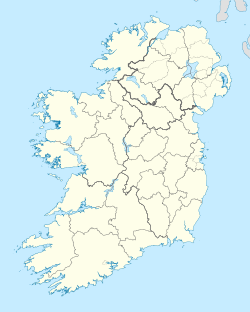History
The railway branch extended eight miles from Downpatrick South Junction to Ardglass. It was classified as a "Balfour Line", named after Arthur James Balfour, who held the position of Chief Secretary for Ireland between 1887 and 1891 before becoming Prime Minister of the United Kingdom. Balfour played a pivotal role in the passage of the Light Railways (Ireland) Act of 1889, [3] which enabled state funding to support the expansion of rail infrastructure, particularly in economically underdeveloped regions. While most of these lines were constructed in western Ireland, the Ardglass branch was the only one established in what is now Northern Ireland. Its primary aim was to bolster the local herring trade, which was believed to be constrained by the lack of direct railway access to Ardglass Harbour. Freight services, particularly for fish, commenced on 31 May 1892, with passenger operations beginning shortly thereafter on 8 July.
Opened by the Downpatrick, Killough and Ardglass Railway, it became part of the Belfast and County Down Railway (BCDR). The line was begun 1890 with the granting of the Downpatrick, Killough & Ardglass Railway Act, obtained under the Light Railways (Ireland) Act. [4] [5] The line was constructed under the management of the BCDR's chief engineer Sir John Macneill. [6]
It began operations in 1892, with stations established at the Downpatrick racecourse, Ballynoe, Killough, and Ardglass. [1] Later on, halts were added at Bright on 12 Oct 1925 and 4 years later at Coney Island in 1929 [2] .A tramway was constructed beginning at the end of the railway line and extended to a point near the northeast end of Ardglass Harbour Pier. The entire route lay within the townland and parish of Ardglass, or possibly just outside the parish boundaries, all located in County Down. The tramway ran along or close to Downpatrick Road, Bath Street, and Quay Street, continuing along the harbour to the pier. [1]
Initially, the single-track route was divided into two operational segments, managed using the staff and ticket system. This arrangement remained in place until 1926, when the signal box at Ballynoe was decommissioned, consolidating the line into a single operational section. The Killough signal box, which had never functioned as a block post, was also closed during this period. By then, the tramway link to Ardglass Harbour had fallen out of use, leaving the branch line reliant solely on local passenger and goods traffic. The station closed to passengers in 1950, by which time it had been taken over by the Ulster Transport Authority.
The station buildings are mostly roofless and derelict in 2017.
This page is based on this
Wikipedia article Text is available under the
CC BY-SA 4.0 license; additional terms may apply.
Images, videos and audio are available under their respective licenses.



